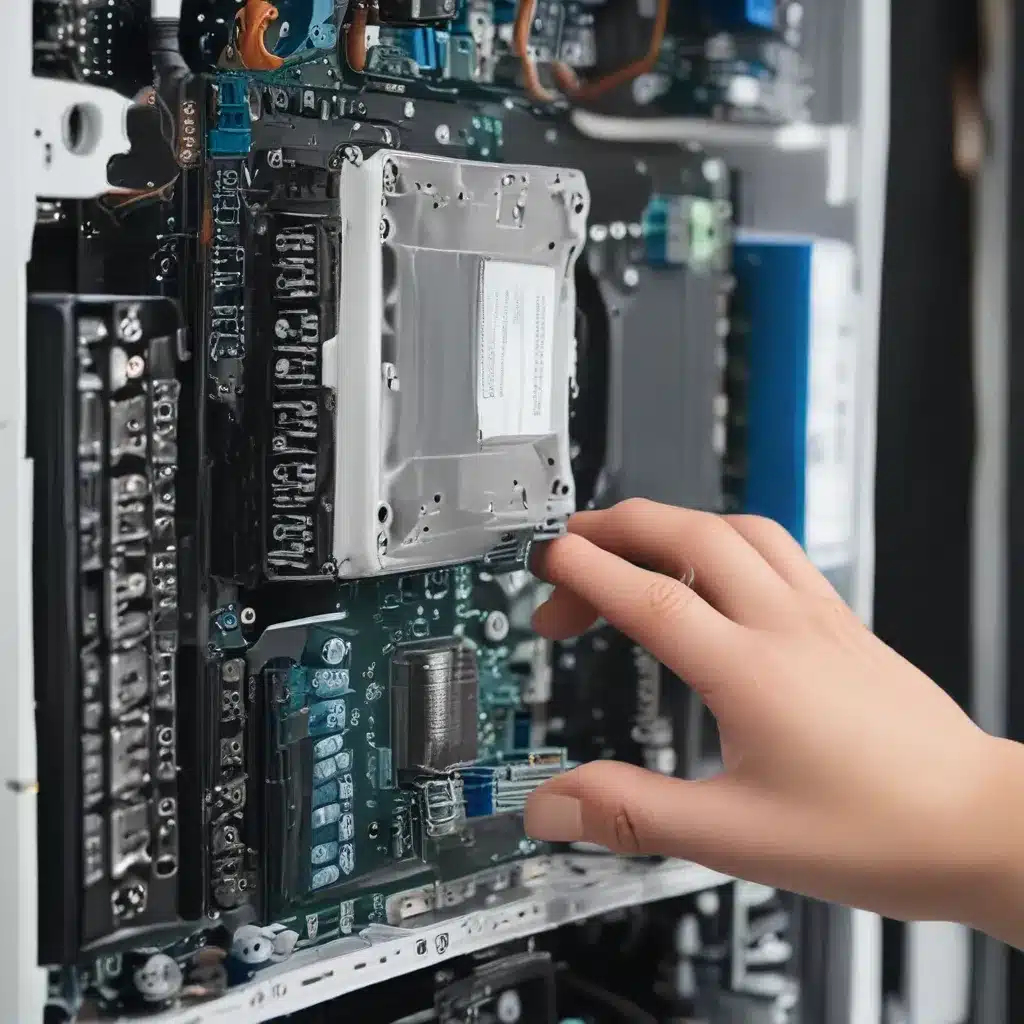
The Perils of Improperly Installed Drivers
As a long-time computer repair technician, I’ve seen my fair share of driver-related issues. From mysterious system crashes to baffling performance problems, improper driver installation can be a veritable minefield for the unsuspecting Windows user. But fear not, my friends – today, I’m here to guide you through the ins and outs of proper driver installation, so you can keep your machine running like a well-oiled machine (pun intended).
Let’s start with a little story, shall we? Picture this: It’s a Tuesday morning, and you’re eager to dive into your latest project. You power on your trusty Windows machine, only to be greeted by a series of error messages and a screen that resembles a modern-day Jackson Pollock painting. Panic sets in as you frantically search for a solution, but to no avail. Sound familiar? Well, my friend, this is a tale as old as time – the dreaded driver debacle.
The Importance of Proper Driver Installation
Drivers are the unsung heroes of the computer world. They act as the intermediary between your hardware and the software that runs on it, ensuring smooth communication and optimal performance. When a driver is installed incorrectly, it can wreak havoc on your system, leading to crashes, freezes, and a host of other frustrating issues.
Imagine trying to drive a car without the proper tires – it would be a recipe for disaster, right? The same principle applies to your computer. Each piece of hardware, from your graphics card to your printer, requires a specific driver to function properly. Skipping this crucial step or using the wrong driver can be the digital equivalent of trying to square a circle.
The Driver Installation Process Demystified
Now, I know what you’re thinking: “Driver installation? Sounds like a job for the tech-savvy elite.” But fear not, my friends, for I am here to demystify the process and make it as painless as possible.
The first step is to identify the specific hardware components in your system. You can do this by visiting the IT Fix website and using their comprehensive hardware detection tool. Once you have the necessary information, it’s time to head to the manufacturer’s website and download the appropriate driver.
But wait, there’s more! Don’t just blindly download and install the first driver you find. Take the time to read the instructions and ensure that the driver is compatible with your specific Windows version and hardware configuration. Trust me, it’ll save you a lot of headaches down the line.
The WDK: Your Driver Development Toolkit
Now, if you’re feeling particularly adventurous (or perhaps a bit masochistic), you might consider delving into the world of driver development. Enter the Windows Driver Kit (WDK), a comprehensive suite of tools and resources designed to help you create, test, and deploy drivers for your Windows hardware.
According to the Microsoft Learn website, the WDK is used to “develop, test, and deploy drivers for Windows.” The most recent public release is WDK 100261001, and it supports development, testing, and deployment of drivers on ARM64 machines, in addition to the previously supported emulation of x86 KMDF/UMDF2 drivers on ARM64 hardware.
But don’t let the technical jargon scare you off! The WDK also includes a Visual Studio extension, making it easier than ever to integrate driver development into your existing workflow. And if you’re not a fan of Visual Studio, the Standalone Windows Driver Kit (EWDK) is a self-contained command-line environment that might be more your speed.
Keeping Your Drivers Up-to-Date
Now, you might be thinking, “Great, I’ve got my drivers installed, and everything’s running smoothly. Time to kick back and relax, right?” Wrong, my friend. Proper driver maintenance is a never-ending battle, but one that’s well worth fighting.
As Microsoft’s support page suggests, it’s crucial to keep your drivers up-to-date to ensure optimal performance and security. Outdated drivers can lead to a host of issues, from compatibility problems to security vulnerabilities.
Fortunately, Windows has built-in tools to help you stay on top of your driver game. The Windows Update feature will automatically download and install the latest drivers for your hardware, so you can sit back and let Microsoft do the heavy lifting. But if you’re the hands-on type, you can also manually check the manufacturer’s website for the latest driver updates.
Conclusion: Mastering the Art of Driver Installation
And there you have it, folks – your comprehensive guide to the wonderful world of driver installation. From the perils of improper installation to the power of the WDK, we’ve covered it all. So, the next time you find yourself staring at a glitchy, error-ridden screen, remember the wise words of this seasoned computer repair technician: proper driver installation is the key to a happy, healthy, and high-performing Windows machine.












